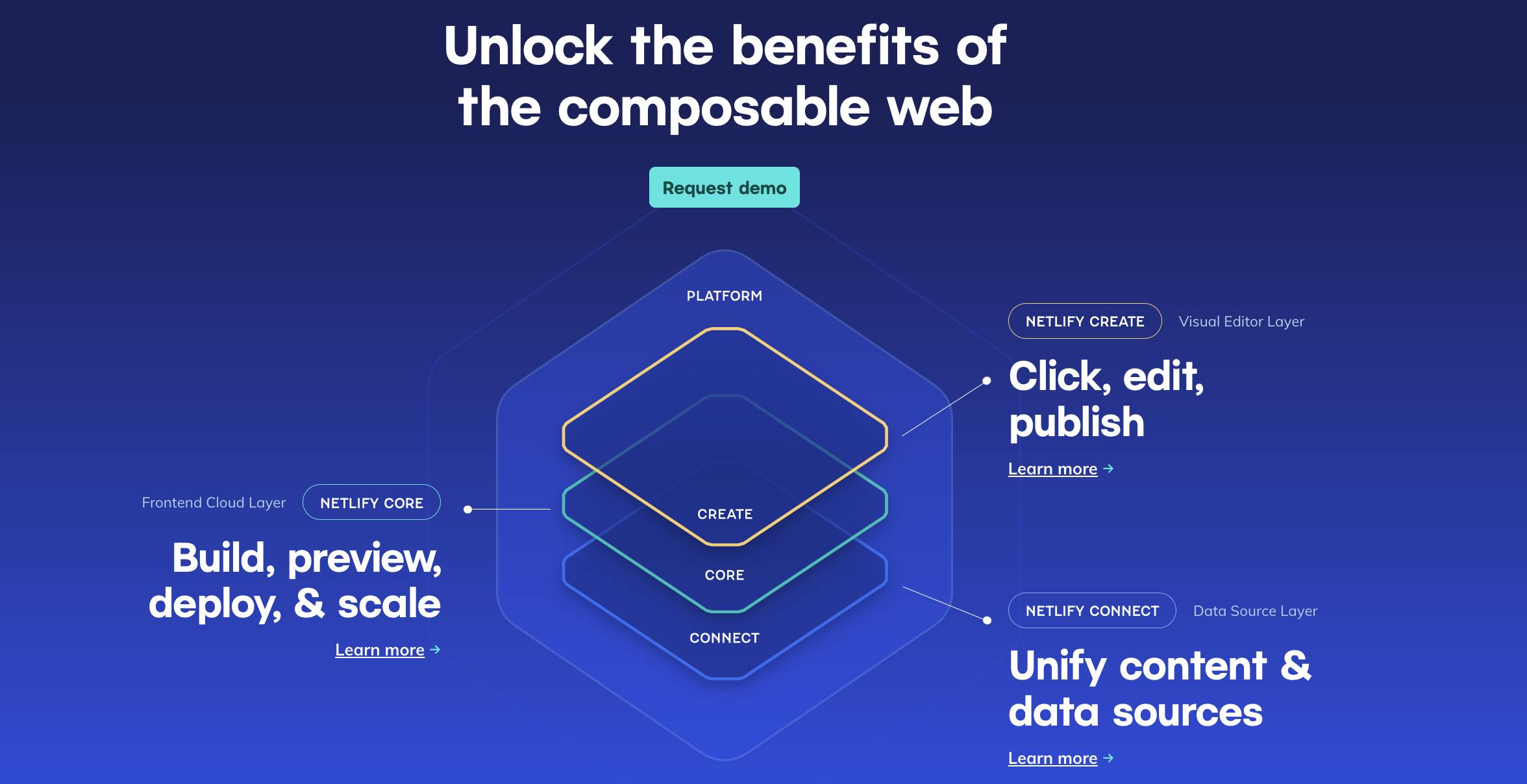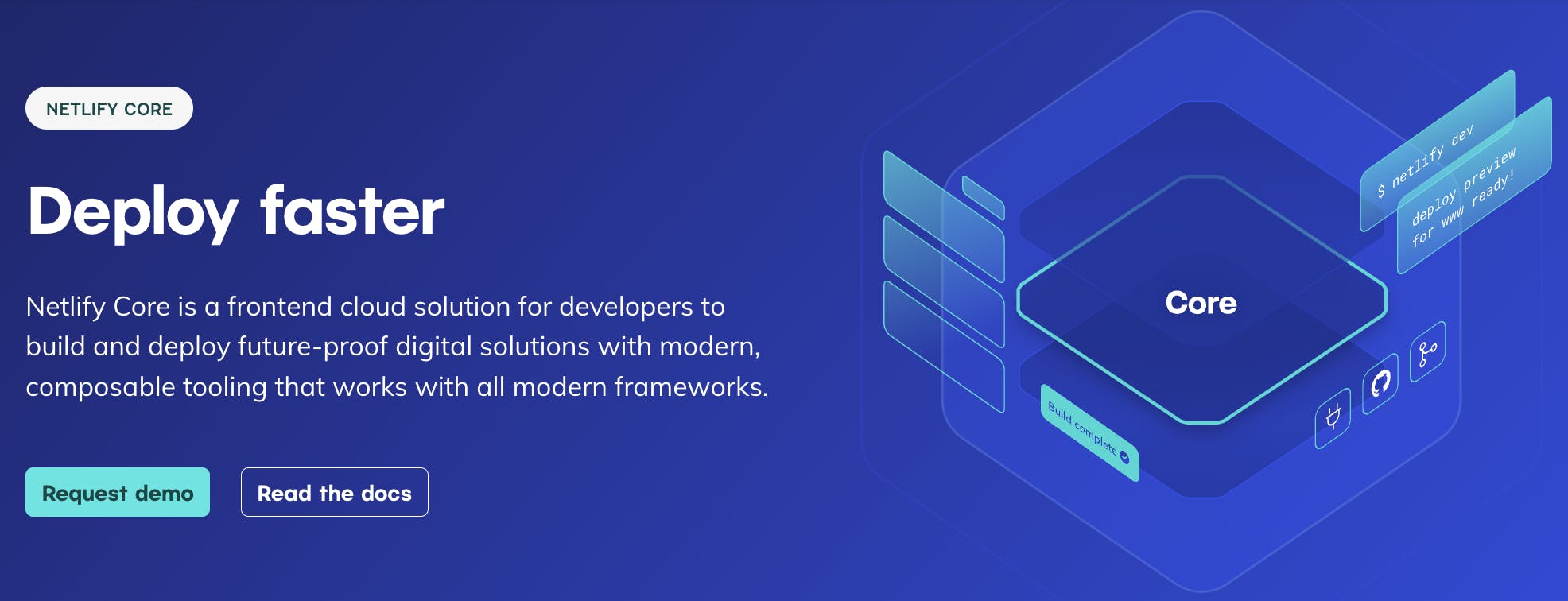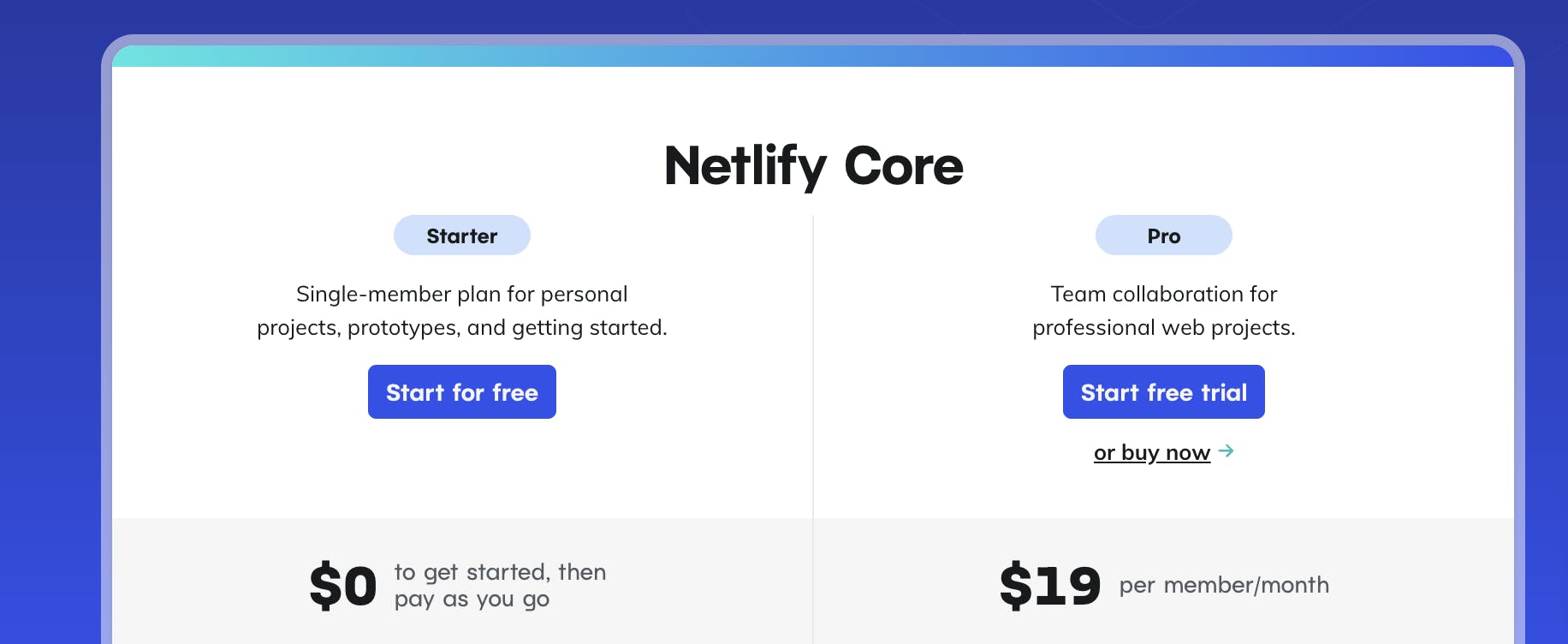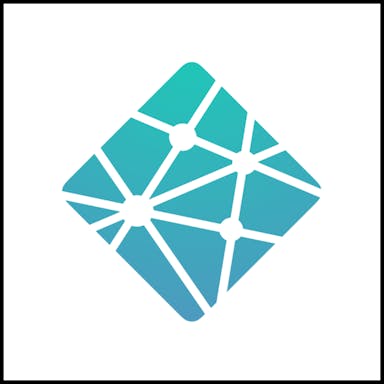Thesis
Consumer-facing businesses increasingly see the need to own a website. In March 2023, 73% of small businesses in the United States reported owning a website, compared to only 50% in 2018. However, building a website typically takes a significant amount of time and effort, especially if a business wants to add customizations. In 2022, it was estimated that a small business website typically takes 1-2 months to build; another estimate from 2024 put the cost of building a small business website at up to $10K.
Even once a website is built, it requires hosting. Web servers can be difficult to deploy, secure, and scale. The need to use cloud platforms for data storage to utilize API integrations to customize the site can add to the complexity. 94% of businesses experienced API security problems in 2022, emphasizing the need to ensure ease and security in API integrations.
Netlify aims to change the way businesses and developers build websites by making it easy for them to do so without the complexity of managing or running web servers. Netlify’s platform ties in a large ecosystem of cloud services and APIs into one workflow. The founding team at Netlify pioneered the Jamstack movement in 2016 (JAM was a term coined by Netlify CEO Mathias Biilmann which stands for “JavaScript, API, and Markup”).
Since then, as its technology has evolved and expanded, the company has changed the way it describes itself to emphasize a composable architecture. Netlify has evolved into a composable cloud platform that helps developers build, deploy, and manage websites and web applications. It also hosts static websites, which are pre-built and don't require a server to run, which can make them faster, more secure, and easier to scale. Netlify also offers features like continuous deployment, serverless functions, content management integrations, and a global content delivery network (CDN), with use cases for both developers and non-technical users.
Founding Story
Netlify was founded in 2014 by Mathias Biilman (CEO) and Chris Bach (CSO). The pair initially met and became friends in high school in Denmark, their country of origin.
Biilmann began his career as an aspiring musician and music journalist before pivoting to engineering in 2006. While running a content management startup called Webpop which he founded in 2010, Biilmann saw several redundant steps in the way websites were developed, particularly the need to decouple frontend development from backend server management.
In December 2013, Biilman, who was living in California, flew back to Copenhagen to visit over the winter holidays. While there, he met up with Bach, who was working as Chief Digital Officer at a Danish company called CONNECTED. This is when the two decided to act on the business idea that would one day become Netlify. Bach later described the vision for Netlify this way:
"My co-founder Matt and I made a big bet when we founded Netlify: we bet on the web. At the time, mobile apps and walled gardens were threatening the open web, but we knew the web as a platform could be performant, secure and scalable enough to fight back. By embracing the API economy, the powerful browsers and the frontend tooling revolution, a new web was possible.”
However, Bach had been recently diagnosed with Hodgkin’s lymphoma, a form of cancer. As a result, it wasn’t until 2015 that Bach moved to Silicon Valley, joining Biilman, and that is when Netlify launched out of private beta. As the founders put it in a blog post in August 2016:
“Back when the two of us started Netlify, it was with a strong belief that static sites, heavily based on Javascript, external APIs, and Markup (or, as we like to call it, JAMstack) should power the majority of all sites and apps.”
Product

Source: Netlify
The founding team at Netlify pioneered the Jamstack movement, an approach that encouraged web development architecture to be driven by client-side JavaScript, reusable APIs, and pre-built static source files (e.g. Markup). Since its early days, Netlify’s product has evolved into what it calls a “Composable Web Platform”, which launched in October 2023 and which the company describes as follows:
“The Netlify Composable Web Platform simplifies content orchestration, streamlines and unifies developer workflow, and enables website speed and agility for Enterprise teams.”
Netlify’s platform has three core features: Netlify Connect, Netlify Core, and Netlify Create. Together, they make up Netlify’s end-to-end platform which provides what the company describes as a “decoupled web stack”, which encompasses the frontend, backend, and data layer into a “single workflow”.
Its goal is to make it possible for users to build and deploy websites faster. As of January 2024, the company states that the average enterprise using Netlify is able to deploy 140 times per week, and it cites case studies of enterprise users who benefit from faster project deliveries, better website performance, a reduction in the number of developer hours needed, a reduction in needed bandwidth, and substantial cost savings.
Connect

Source: Netlify
The purpose of Connect, which is the data unification layer of Netlify’s decoupled web stack, is to allow users to unify their content sources. It brings content sources and CMS applications together in a unified location, which users can use to manage how content is served on the front end.
Connect includes no-code integrations for a selection of supported content sources, an SDK that allows users to integrate custom content sources more easily, API calls that route content directly to where data is cached, the ability to automatically rewrite all frontend updates and content changes to the originating content source, and the ability to create webhooks for custom or non-Netlify websites.
Netlify asserts that its Connect layer has several benefits, including:
Increased content speeds and better website performance with data cached and immediately available at the Edge.
Reduced migration risk with the ability to “create redundancy and then swap out and update web architecture incrementally”.
Lower costs for a full web stack migration because Netlify allows users to combine value from existing content sources with its modern frontend technology.
A “flexible and future-proof” digital experience with customizable integrations using the Netlify SDK and flexibility to build for the future.
Core

Source: Netlify
Core is Netlify’s frontend cloud layer that allows developers to build, deploy, and run websites and apps. Its goal is to help save time and resources on what would otherwise be “labor-intensive operations” in the process of building websites or apps. Core allows users to create projects or import existing ones from Git repositories. It also pushes projects live through autonomous continuous delivery and offers 70+ integrations with partner solutions as of January 2024.
Teams can preview and collaborate on website changes with a “Deploy Preview” feature and can collaborate within a single workflow. Deploy Previews can be made password-protected, and users can also automatically capture metadata from browsers for the sake of troubleshooting and fixing codes more quickly. Other collaboration features include comments, annotations, screenshots, screen recordings, and the ability to automatically open issues or tickets for necessary stakeholders.
Create

Source: Netlify
Create is Netlify’s visual editor layer. Its goal is to make it easier to launch marketing campaigns, pages, and websites for non-technical teams like product or marketing teams. Netlify describes Create as “technology agnostic”. It integrates with users’ existing content systems, frameworks, or architecture, and allows users to edit visually in an intuitive manner. Notable integrations include WordPress and Shopify.
Netlify’s acquisition of Stackbit, “a company that provides a no-code visual interface for editing web pages and applications”, in June 2023 likely contributed towards its Create product.
Market
Customer
Netlify’s products are targeted at businesses that aim to deliver functional and personalized web experiences, ranging from SaaS platforms to ecommerce sites or marketing campaigns. Notable customers listed on its website as of January 2024 include Google, Twilio, Figma, Nike, Peloton, Verizon, Mailchimp, Riot Games, and Danone.

Source: Netlify
As of February 2023, Netlify hosted more than 3 million developers on its platform. The advantages of Netlify’s platform are often identified as speed and convenience. For example, Netlify powered a large-scale advertising campaign website from Nike that was built in under a month. One Netlify customer wrote the following review:
“Netlify solved our problems about deploying and hosting modern web applications (React based) without having to struggle too much about infrastructures. Many internal IT teams in big companies are still not able to provide a proper environment for hosting of frontend modern applications, Netlify just erased this issue from our stack… The publishing process is extremely simple and at the same time offers you several options: you can connect your repository and set up automatic rebuilds for each commit, but you can also proceed with a manual publication if you prefer.”
Market Size
The global market for web development was valued at $5.6 billion in 2021 and was expected to reach $8.9 billion by 2027, growing at an 8% CAGR. Meanwhile, the market for application development software in 2022 was valued at $153 billion and is expected to reach $217 billion by 2027. In March 2023, 73% of small businesses in the United States reported owning a website, compared to only 50% in 2018. In 2024, it was estimated that the cost of building a small business website at up to $10K.
Meanwhile, the API management market was valued at $4.2 billion in 2023 and is projected to reach $15.9 billion by 2028, growing at a 24.8% CAGR. As of January 2024, there were over 3.4 million API-related repositories on GitHub, and in 2022 it was reported that 90% of developers use APIs. In 2021, API calls represented 80% of all web traffic, and the number has only been increasing. Jeff Lawson, the CEO of Twilio, described the necessity of embracing software delivery this way:
“Unfortunately, many companies have never viewed software development as a core competency. They rely on packaged programs sold by independent software vendors and hire consultants to write custom code. The problem is that packaged programs are one-size-fits-all and can’t be customized very much. That might be okay for back-end systems like HR and financials, but for customer-facing parts of the business, using off-the-shelf software no longer cuts it.”
Netlify also supports and emphasizes a serverless-first web development approach, which enables businesses to scale their websites in both performance and efficiency and stands as one of Netlify’s main criteria of differentiation. The serverless architecture market saw $12.4 billion in revenue in 2022 and was projected to surpass $193 billion by 2035.
Competition
Direct Competitors
Gatsby: Founded in 2015, Gatsby was a cloud platform for deploying dynamic web applications. Gatsby Cloud is specifically designed for websites built with the Gatsby framework. It raised nearly $47 million in funding before being acquired by Netlify in February 2023.
Vercel: Founded in 2015, Vercel is framework-agnostic and largely focuses on simplifying the frontend development process. The closest competitor to Netlify in terms of scope and size, it has raised $313 million in total funding as of January 2024. It raised a $150 million Series D in November 2021 at a valuation of $2.5 billion. The round was led by GGV Capital with participation from Accel, Bedrock Capital, CRV, Geodesic Capital, Greenoaks Capital, GV, 8VC, Flex Capital, Latacora, Salesforce Ventures, SV Angel, and Tiger Global. At the time of its Series D, it was used by over 25K customers, including TikTok, Hulu, and McDonald’s.
Adjacent Competitors
Firebase: Firebase, founded in 2011, is a backend service that developers can use to build real-time apps for iOS, Android, and the web. It was acquired by Google in 2014 for an undisclosed price after having previously raised a total of $7 million in funding. Firebase targets dynamic websites as a use case and Android or iOS app development, whereas Netlify is targeted at static website development.
Heroku: Heroku is another web-hosting platform that was founded in 2007. It raised a total of $13 million in funding before being acquired by Salesforce in 2010 for $212 million. It is a platform-as-a-service product that can be used to develop and run web and mobile apps and is more focused on backend developers working on both web and mobile apps, whereas Netlify integrates both the frontend and backend and is focused on websites.
Business Model

Source: Netlify
Netlify has a SaaS business model with three different pricing tiers. The “Starter” tier is a plan for individual developers to create personal projects and is free. The “Pro” plan is a tier meant for small teams to collaborate and create web projects, and it is priced at $19 per member per month. Finally, there is an enterprise pricing tier for which Netlify offers custom pricing.
Traction
In 2021, Netlify reported having over 2 million developers on its platform, including large enterprises like Unilever and Nike. By February 2023, Netlify this number had increased to more than 3 million developers, with notable customers including Google, Twilio, Figma, Nike, Peloton, Verizon, Mailchimp, Riot Games, and Danone as of January 2024.
There are over 3 million developers and businesses who use Netlify to power their websites, and millions more in the broader Jamstack developer community. In 2022, Netlify estimated that about 16% of the world’s internet population visits at least one Jamstack-powered platform each month.
Netlify has also executed several acquisitions to help it grow. For example, it acquired Gatsby in February 2023. The company had raised a total of $46.8 million in funding prior to the acquisition, which took place at an undisclosed purchase price. At the time of the acquisition, Netlify CEO Mathias Biilman commented that:
“The future of the web is composable architectures. The acquisition of Gatsby not only accelerates our product roadmap, but more importantly, allows us to provide developers with increased flexibility and choice in building composable web experiences… We’re excited to integrate Gatsby’s cloud innovations into the Netlify platform, and open up Gatsby’s content hub and source plugin ecosystem to the diverse world of modern front-end frameworks like Astro, Next and Remix.”
Netlify also acquired Stackbit, a no-code company that provided a visual interface for editing web pages and applications, in June 2023. This acquisition was used to help develop Netlify’s visual editor product, Create.
Valuation
As of January 2024, Netlify had raised $212.1 million in total funding. In November 2021, Netlify raised a $105 million Series D at a $1.9 billion valuation. Bessemer Venture Partners led the round with participation from existing investors Andreessen Horowitz, Bond, EQT Ventures, Kleiner Perkins, Mango Capital, and Menlo Ventures.
Key Opportunities
Serverless = Scale
Serverless design allows developers and businesses to build websites without having to manage the underlying servers. Netlify’s original Jamstack architecture not only pushed for greater speed and security; it emphasized a serverless-first web development approach, which allows websites to scale with performance and convenience. A 2022 Jamstack report found that serverless is the new norm, with 70% of developers adopting serverless workflows, up from 46% in 2021.
One of Netlify’s investors, Kleiner Perkins partner Bucky Moore, remarked the following about the modern landscape of web applications:
“If you think about the number of web applications and websites that exist on the internet today, the rate at which those websites are being evolved or rebuilt and, frankly, the net new type of web applications and websites that are being built, it's an enormous pool of activity. So is the amount of infrastructure, tooling and services that need to be purchased, adopted and consumed to support that activity is also large, and the resulting opportunity for startups.”
Growth Through Acquisitions
Netlify has made several acquisitions in recent years, including FeaturePeek (a tool for developers to preview frontend content), OneGraph (a tool for building integrations with third-party services), and Quirrel (an open-source tool for serverless job management), along with the aforementioned acquisitions of Gatsby and Stackbit in 2023. As the company expands into other aspects of the development process, these acquisitions indicate Netlify’s commitment to continue to grow its product platform.
Key Risks
Increased API Vulnerabilities
In 2021 Gartner predicted that API attacks would be the most common attack vector in the years to come, with the number of API attacks doubling by 2024. Sure enough, Q1 2022 saw a 286% increase in API exploitations, with similar trends continuing through 2023.
In light of these cyberattacks, many companies risk their key data being accessed by unauthorized agents by the nature of going digital. As software development becomes increasingly intertwined with business functions, secure and functional frameworks — particularly for full-stack hosts such as Netlify — will become vital to its reputation as a service.
Competitive Landscape
Netlify faces competition from similar companies that are building serverless backend and hosting services for web applications. Vercel is Netlify’s biggest direct competitor. Supporting more programming languages, Vercel is a flexible alternative for enabling developers to deploy dynamic web apps, and it has seen significant traction in recent years, with one source estimating that the company achieved $60.6 million in revenue in 2023. Both Vercel and Netlify raised large rounds of funding in November 2021 that valued the companies similarly ($2.5 billion vs. $1.9 billion), placing them in tight competition.
Summary
Netlify, founded in 2014, offers a platform that simplifies website development. Originating the Jamstack movement, Netlify evolved into a composable cloud platform, emphasizing a flexible architecture. Its features include continuous deployment, serverless functions, content management integrations, and a global CDN. The company targets businesses aiming for personalized web experiences. Netlify's products, such as Netlify Connect, Core, and Create, constitute a decoupled web stack for efficient workflow and content orchestration.
As of January 2024, Netlify has raised $212.1 million and reported over 3 million developers on its platform, with notable customers like Google, Twilio, and Nike. The company operates on a SaaS model with free and paid tiers, and it raised $105 million in a Series D round in November 2021, valuing the company at $1.9 billion. Key opportunities for Netlify include the serverless-first approach for scalability and growth through strategic acquisitions. However, increased API vulnerabilities and a competitive landscape, especially with Vercel, pose risks to Netlify's continued growth.




